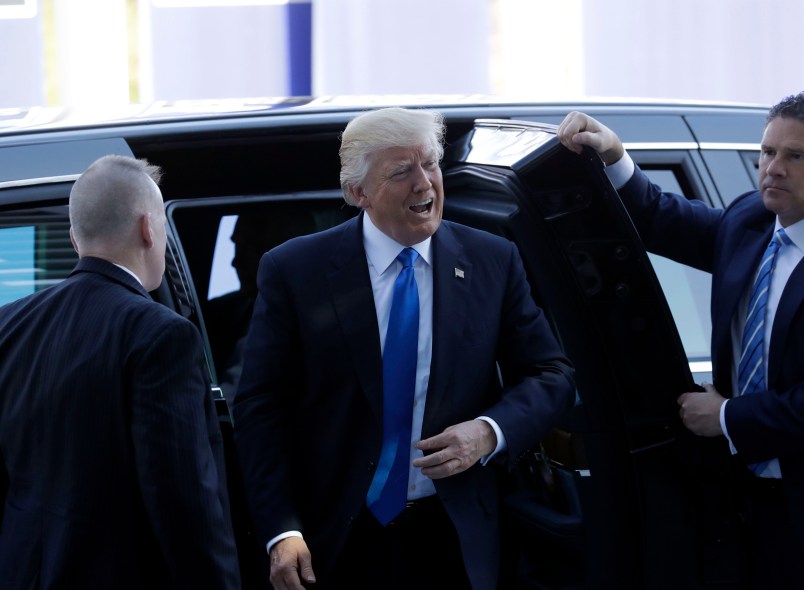We just saw this embarrassing spectacle of President Trump not stating an unequivocal commitment to honoring Article 5 of the NATO Treaty, which requires all member state to defend another member state under attack. But Trump also returned to this issue of NATO members being behind on their payments and owing the United States huge sums of money. This is simply false. And it is a falsehood in the service of President Trump’s still not fully explained desire to undermine NATO.
There are two funding issues with NATO. A few years ago, NATO decided to require all member states to spend 2% of GDP on defense spending. The great majority of member states currently spend less than 2%. The ones who do meet that number are the US and a handful of states mainly on NATO’s eastern periphery. But they have until 2024 to reach that goal. So even on the terms of the agreement itself, they’re not behind.
But the key point is that these are not payments owed to the US. They are spending on each country’s own military. There are lots of reasons for that, not least of which is keeping the alliance a real alliance and not one superpower military along with other armies which are either so small or have such low readiness that they don’t add to the force the US can bring to bear on its own.
The relevant point is that that this is a relatively new agreement, which most of the key states are increasing spending to meet – though some faster than others. They’re not behind schedule. They have until 2024.
Separately there are direct contributions from each member state to NATO’s joint operations, costs of the specifically NATO activities etc. – a bit under $1.5 billion. The US pays by far the largest share of that. But that’s because the contributions are based on a formula that broadly tracks national wealth. The US pays 22%, Germany pays 14.6%, France 10.6%, Britain 9.84%. So it’s judged on the basis of ability to pay.
There’s also the obvious but sometimes not openly stated point: the US is the Great Power! You usually have to chip in at least a little money for your Great Power status, or your empire, to put it more archly. The US is a North America state. It’s not in Europe. Maybe we shouldn’t be involved in Europe at all. That is what Trump seems to think and it’s a central strategic goal of Russia. But as long as we have decided to be the major power in Europe, with all that goes with that, the payment arrangements make sense. The NATO goal is 2% of GDP. Some NATO member states are down at 1%. The US is over 3.6%. But that’s not because we’re picking up the slack for major European powers. It is because the US has made a longstanding strategic decision to be the dominant, indeed, overwhelmingly dominant military power literally everywhere in the world.
In any case, these are pretty piddling amounts in the big picture: the US direct cash contribution to NATO is 2 or 3 hundred million dollars a year. Trump himself should hit that number with Mar-a-Lago visits soon.
The idea that Europe is somehow behind on its payments is simply false, whether you’re talking about the 2% goal or the NATO budget contributions. The President got up there at a ceremony for the opening of the new NATO headquarters and let off with an aggressive barrage of straight up lies.






